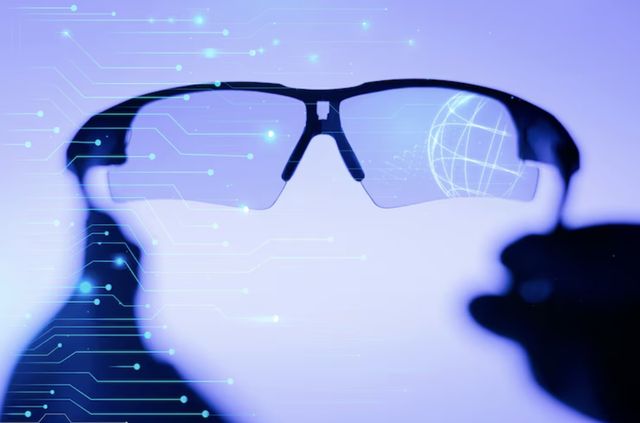What Are Smart Glasses and How They're Used in Daily Life
- Category: Pics |
- 3 Jun, 2025 |
- Views: 498 |
Smart glasses have quietly moved from science fiction fantasy into actual products people can buy and use, though most consumers still associate them with Google Glass and its spectacular failure rather than current devices that actually work reasonably well. The technology combines miniaturized computers with regular eyewear, creating gadgets that can display information directly in your field of vision without completely blocking your view of the real world.

Modern versions look almost like normal glasses, which helps a lot with the social awkwardness that plagued earlier models. The computing happens either in the frames themselves or through wireless connections to smartphones, enabling everything from basic notifications to complex augmented reality experiences. Some newer models even support streaming entertainment content, including live casino games directly into your vision, though battery life during video streaming remains frustratingly short for most practical purposes.
Different manufacturers target completely different markets, from basic notification displays that cost a few hundred dollars to advanced AR platforms running several thousand. Consumer acceptance varies wildly depending on where you live and what kind of work you do, with some professions embracing the technology while others remain skeptical about wearing computers on their faces.
How the Technology Actually Works
Display technology has improved dramatically since those early chunky prototypes that looked like something from a 1980s movie. Current systems use waveguide optics that bounce light through specially designed lenses, creating images that seem to float in front of you while keeping the real world visible underneath.
However, bright sunlight still washes out most displays, making outdoor use challenging during summer months or in sunny climates.
Sensors packed into the frames track head movement, hand gestures, and even eye movement in more expensive models. Eye tracking sounds futuristic until you try calibrating it and discover how much individual differences in eye shape and movement patterns affect accuracy. Some people get it working perfectly while others struggle with drift and false inputs that make the interface more frustrating than helpful.
Audio systems have gotten creative with bone conduction speakers that vibrate sound through your skull, leaving your ears open to hear traffic and conversations. Directional speakers aim sound specifically at your ears while minimizing what others hear, though this works better in quiet environments than noisy offices or busy streets. Voice commands work when background noise doesn't interfere, but most people feel self-conscious talking to their glasses in public.
Professional Uses That Actually Make Sense
Factory workers and technicians have adopted smart glasses much faster than general consumers because hands-free access to information solves real workplace problems. Assembly line workers can see part numbers and installation instructions without looking away from their work or stopping to consult tablets or printouts. Maintenance technicians get expert guidance through video calls where remote specialists can see exactly what they're working on.

Healthcare applications work well in specific situations, particularly surgery where doctors can access patient information and imaging data without breaking sterile procedures. Medical students use them for anatomy lessons that overlay information onto physical models or cadavers. However, patient privacy concerns and hospital IT security requirements have slowed adoption compared to other industries.
Warehouse and delivery workers benefit from turn-by-turn navigation and package information that appears in their vision while keeping hands free for carrying and sorting. GPS accuracy works fine in most situations, though tall buildings and indoor locations can still cause problems. The real advantage comes from not having to constantly pull out phones or scan paper lists.
Everyday Consumer Applications
Fitness tracking through smart glasses provides performance data right in your field of view during workouts, which beats constantly checking watches or phone screens. Runners get pace and distance information while cyclists receive navigation prompts and safety alerts. However, comfort during sweaty workouts varies tremendously between different frame designs and face shapes. Some people love them while others find them annoying after twenty minutes.
Social media integration lets users capture photos and videos from their exact perspective, creating more immersive content than traditional cameras. However, the always-available recording capability makes some people uncomfortable, especially since it's not always obvious when someone is filming. Social acceptance continues evolving as more people encounter smart glasses in daily situations.
Shopping applications provide product information and price comparisons when you look at items in stores, though retailer cooperation remains inconsistent. Virtual try-on features work better for some products than others, with glasses and simple accessories showing more promise than complex clothing items. The technology helps reduce returns and improves customer satisfaction when it works properly.
Communication features include video calling where others can see your perspective, voice-to-text messaging, and calendar reminders that appear contextually based on location or time. Battery drain during video calls limits session length, while voice recognition struggles in environments with significant background noise or multiple conversations.
Real-World Problems and Limitations
Display visibility crashes in bright sunlight despite manufacturers' claims about improved brightness and anti-glare coatings. Outdoor use during summer months often requires finding shade to read anything clearly. Color accuracy and contrast still lag behind phone screens, making detailed text and complex images harder to process quickly.
Privacy concerns extend far beyond the obvious camera and microphone capabilities. Eye tracking data reveals what captures attention, location tracking follows movement patterns, and behavior analysis builds detailed profiles of user habits. Most people don't realize how much information their smart glasses collect or understand how companies use this data for advertising and product development.
Comfort and fit problems affect many users since glasses need precise positioning for displays to work correctly. Unlike regular eyewear that has some tolerance for positioning, smart glasses require exact placement for optimal image clarity and eye tracking accuracy. Getting proper fit often requires multiple adjustments and sometimes different frame sizes.
Smart glasses technology improves steadily with each product generation, addressing previous limitations while adding capabilities that expand both professional and personal applications. Success depends largely on matching specific use cases with appropriate technology rather than expecting any single device to excel at everything.

